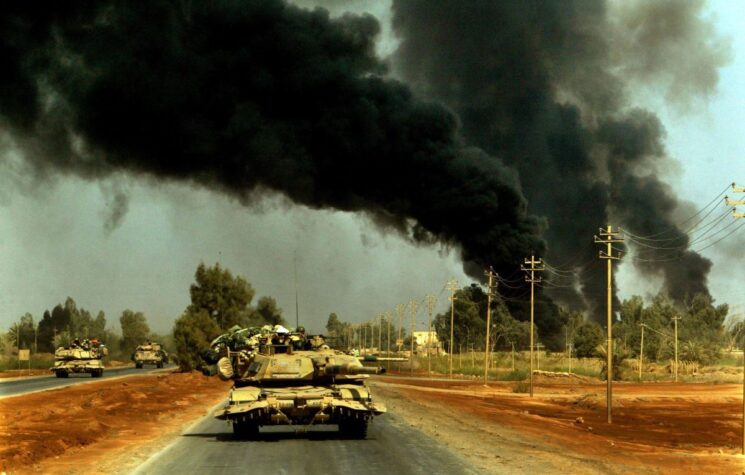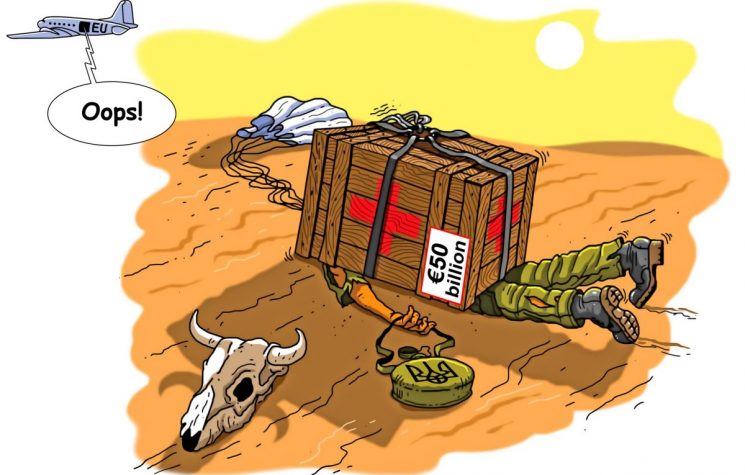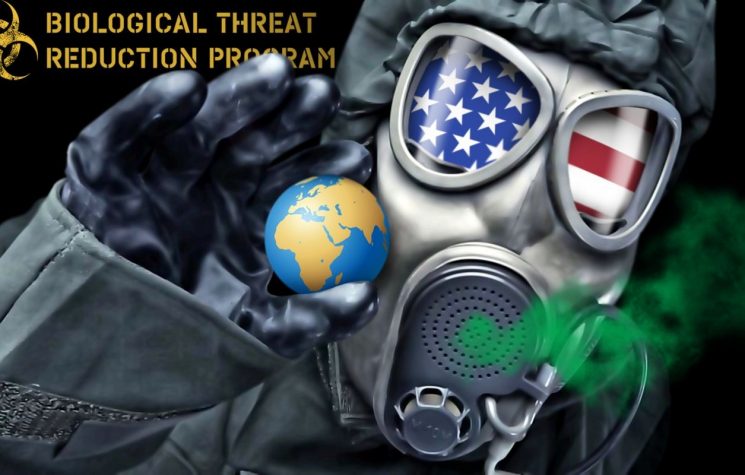President Biden’s beacon has been deflected to the rugged trails of aggression, Brian Cloughley writes.
The Washington Post put it gleefully by headlining that as a result of the January 26 Biden-Putin telephone call “The Biden-Putin relationship is already on the rocks.” It was no surprise that the profoundly anti-Russia Post would take an entirely negative approach to the U.S.-Russia relationship, whatever the signals might have been, but its reporting of that phone call must have lit up smiles in offices in and all round Washington, from the Pentagon to the Boeing office in Arlington, via Raytheon in Pennsylvania Avenue, Lockheed Martin in Bethesda, Northrop in Falls Church and all the other members of the military-industrial complex who see even more profits looming.
Biden seems to have more heart than his predecessor (but then, most people do), and has concentrated on urgent domestic affairs in his first days in the White House. His desire to combat and overcome the pandemic is not simply political (as in the UK, for example), but seems to stem from a genuine feeling that people matter and that their well-being should be the most important consideration in his deliberations. His White House speech of January 26 was more compassionate than anything Trump ever uttered, and even though Biden did fall into the temptation of rubbishing the disgraceful fumbling of the mercifully-departed Mar-a-Lago man, he was positive and even mildly optimistic. But his approach to international affairs, notably in regard to China and Russia, is negative and pessimistic.
The signal he sent by appointing retired General Lloyd Austin III to be defence secretary was a decidedly mixed one. He obviously intended to attract approval by choosing a black person for the job, which was part of his understandable desire to bind the nation together, but picking a former general was unwise. Apart from anything else, none of these generals have even come close to winning a war, but the main thing is that the war machine should be headed by a civilian, therefore making it clear that the military are not top-guns in any administration.
But Austin is assuredly a top gun, and a rich one too, because he has been deeply involved with military contractor Raytheon, having served on its board and having substantial stock holdings in a company whose 195,000 employees, as reported by the New York Times, “make fighter jet engines, weapons, high-tech sensors and dozens of other military products” that it hawks for billions of dollars a year. And when Mr Austin sells his shares, as he is legally bound to do, he’ll get as much as 1.7 million dollars, which gives rise to the reasonable question that when Raytheon representatives come panting round the Pentagon to apply for another billion-dollar contract, just how can Mr Austin ignore them?
The NYT also noted that Austin “has served as a partner at an investment firm named Pine Island Capital, whose board he joined in July [2020]. The firm has been on a recent buying spree of small military contractors, including Precinmac Precision Machining, which sells specialized parts for rocket launching systems and machine guns”.
The military-industrial complex has just got itself a might ally in the top echelons of the new Administration in Washington, and given that Biden endorses confrontation with Russia and China, currently involving carrier strike groups roving off China’s coast, three U.S. Navy warships operating in the Black Sea, and U.S.-led Nato manoeuvres in the Arctic which U.S. Admiral Andrew Lewis declares to be “the new frontier of our homeland defence,” it is apparent that the new Biden Cold War will be lucrative for countless weapons’ manufacturers and a shot in the arm for the Pentagon, which is being given 740 billion dollars to spend in 2021.
The former Majority Leader in the U.S. Senate, Mitch McConnell, trotted out the usual platitudes about patriotism and declared that the money “looks after our brave men and women who volunteer to wear the uniform” while — of course — ensuring that “we keep pace with competitors like Russia and China.’’
Keep pace? As recorded by the Stockholm International Peace Research Institute, “the USA’s military spending in 2019 was over 11 times greater than Russia’s” and about three times that of China, which has four time the population of the U.S. and the longest land border in the world, at 22,117 kilometres / 13,743 miles. Russia has a land border of 20,241 km / 12,577 miles, the second largest in the world, and is faced to its west by hostile states which provide bases for air, naval and ground forces from countries of the U.S.-Nato military alliance. One might wonder why both China and Russia have been forced to focus on their armed forces at the expense of social improvements for their citizens — but when they are faced with a massive military empire that has declared its open hostility, there is little choice but to prepare for conflict.
Washington’s National Defence Strategy is designed specifically “to meet the challenges posed by a re-emergence of long-term strategic competition with China and Russia” but fails to mention that the U.S. has over 800 military bases around the world, strategically placed to menace Russia and China, and costing an estimated 150 billion dollars a year. This is in addition to the eleven carrier strike groups and countless B-52 nuclear bomber sorties that menace nations considered by Washington to merit confrontation.
The Watson Institute at Brown University has calculated that the U.S. has spent 6.4 trillion dollars in waging wars since the 9/11 atrocities gave rise to the “Global War on Terror” and all its spinoffs from Afghanistan to Libya, via Iraq, Syria and dozens of other unfortunate countries that have suffered catastrophic destruction and myriad deaths from the military actions of what President Biden calls the “beacon for the globe.”
Listening to the inauguration speech by President Biden was indeed uplifting, and his expressed sentiments were admirable. But since then the tenor has changed concerning external affairs, and although there is certainly a beacon on what President Reagan referred to as the “Shining City on the Hill”, it is beckoning to the wrong people.
President Biden’s beacon should be directed along avenues that lead to international dialogue, moderation and harmony. But it has been deflected to the rugged trails of aggression. It is a signal to the Pentagon and its stalwart supporters that power and profit lie ahead in the beacon-lit shopping malls of weapon manufacturing. President Eisenhower warned against “acquisition of unwarranted influence… by the military-industrial complex,” but that is what is happening, and unless Uncle Joe has a rethink about his approach to Russia and China, there will be major rocks ahead.



































